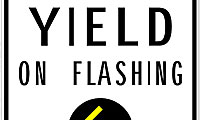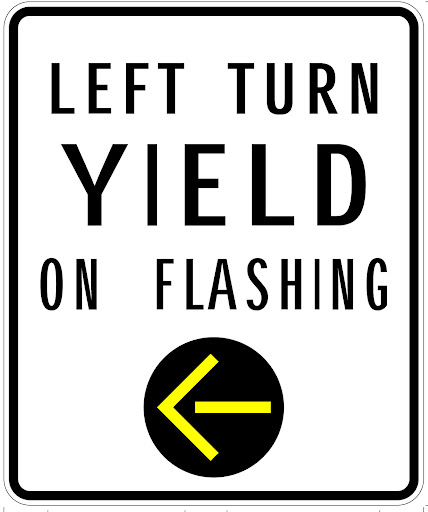Flashing yellow arrow coming to I-10 interchange at 32nd Street
Flashing yellow arrow coming to I-10 interchange at 32nd Street

A view of the sign drivers soon will see at the I-10/32nd Street intersection.
Red means stop and green means go, but what about a flashing yellow arrow?
It’s a traffic signal you might not encounter daily, however ADOT plans on adding one to the I-10 interchange at 32nd Street near Phoenix Sky Harbor International Airport and drivers should be prepared for the change.
What are the rules?
A flashing yellow arrow means you can make your turn, but only when it is safe to do so. You must use caution and yield to pedestrians and oncoming traffic – those drivers will have a green light.
Why make the change?
Increased traffic and recent development have translated to big daily backups at this intersection during the peak of rush hour…
The installation of a flashing yellow arrow means more vehicles per signal cycle will be able to make a left turn onto the westbound I-10 freeway entrance ramp. Right now left turns for northbound 32nd Street traffic only are allowed on a solid green arrow signal.
What’s the big deal?
Flashing yellow arrows are used by some Arizona cities and are popular in other states, but this will be the first for ADOT.
ADOT engineers have been monitoring the intersection and will continue to do so after the flashing yellow arrow is in operation. They’ll be looking at how well it works for traffic in this spot and will evaluate whether or not it might work for other ADOT intersections, too.
What else is there to know?
The flashing yellow arrow will be installed overnight on May 19 and drivers should expect restrictions so ADOT can adjust the signal timing and phasing.
And, don’t forget to use caution the first time you encounter a flashing yellow arrow … keep a close eye out for pedestrians and oncoming traffic.
For more on ADOT and traffic signals, check out our previous blog posts on ramp meters and this one on how ADOT coordinates with municipalities to synch signals.
Editor's Note: This blog post has been edited to correct an earlier version that incorrectly stated the intersection would need to close for work to be completed.

